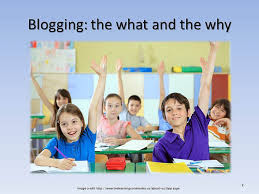This is a first for me. In the past, I have internally reviewed lessons that I have taught. I have made notes about how I might improve the lesson next time I teach it. I have never shared any of these reflections with others - - - until now. Dr. Z Reflects - for real!
This is an extemporaneous reflection on how I introduced our final project. Instead of just beginning the session by saying "Today we are going to be learning about our final project for the semester." Instead, I began by contextualizing the upcoming project by beginning with us reviewing an article I had asked them to read before class, Five Characteristics of Learner-Centered Teaching. I broke them into groups by tables and had each group review a specific characteristic and discuss how the assignments we had completed this semester fit that characteristic. They all share good observations and they agreed that we had been following the characteristics. I followed this with an explanation that this final project is the culmination of our learner-centered experience and I showed them some examples. The students left completely involved in anticipating the upcoming challenge. Watch the 9-minute video and it will complete my story.
Here is the reflection. I have some more ideas and resources that I will post below the video. I hope that you find this interesting. PLEASE provide feedback in the Comment section at the bottom of this post.
This is an extemporaneous reflection on how I introduced our final project. Instead of just beginning the session by saying "Today we are going to be learning about our final project for the semester." Instead, I began by contextualizing the upcoming project by beginning with us reviewing an article I had asked them to read before class, Five Characteristics of Learner-Centered Teaching. I broke them into groups by tables and had each group review a specific characteristic and discuss how the assignments we had completed this semester fit that characteristic. They all share good observations and they agreed that we had been following the characteristics. I followed this with an explanation that this final project is the culmination of our learner-centered experience and I showed them some examples. The students left completely involved in anticipating the upcoming challenge. Watch the 9-minute video and it will complete my story.
Here is the reflection. I have some more ideas and resources that I will post below the video. I hope that you find this interesting. PLEASE provide feedback in the Comment section at the bottom of this post.
Here is the graphic for the "5 Characteristics" article that I asked our student (Emily Caylor) to create.
Motivating Achievement
I also tried something new with our students. We have a couple of assignments that they are responsible to complete throughout the semester.
- One assignment involves having them create a Blog and write 4 blog posts about things they are learning or things that interest them concerning educational technology.
- The other assignment challenges them to expand their Personal Learning Network. This means that they connect with other educators through Twitter or Facebook or ???
The problem is that many of them keep "putting it off" and the end of the semester is rapidly advancing. Many of the students are sorely behind on this assignment. Last night I was talking with one of my Instructional Technology masters students who is interested in research the effect that self-monitoring can have on students. I thought that one way for my students to monitor their own progress on these two assignments by sharing their successful progress on these assignments.
At the beginning of class today, I created a table on the whiteboard that asked them to post their name if they had worked on their blog or their Personal Learning Network. As they entered the room, I suggested that they might want to put their names on the board if they had worked on either of these projects. Twenty of our twenty-eight students registered success. It will be interesting to see if that number increases next Friday.
So what do you think? Was this reflection meaningful for you (it DEFINITELY was for me.) Do you think that you will be doing some vlogging on your blog?
Respond in the comments below












